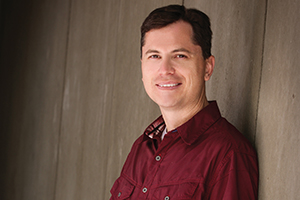
As a child, James Sutherland was always interested in how things worked. During high school, he was the kind of curious student who rebuilt a 1971 Toyota Land Cruiser while also enjoying his chemistry and physics classes. So engineering was a natural choice for him for college because it gave him an understanding of how the world was built and how it can be improved upon.
Today, Sutherland, now has the privilege of helping students on that same journey of discovery as an associate professor of chemical engineering at the University of Utah.
Sutherland received his bachelor’s and doctorate in chemical engineering from the University of Utah in 1999 and 2004 respectively. He was a post-doctoral researcher at Sandia National Laboratories in the computational thermal fluids department. But in 2006 he joined the University of Utah’s faculty in large part because of his love of teaching.
“I believe the largest impact we have is what we do to improve others’ lives, and teaching is one way that I try to help others,” he says about his decision to become a professor.
Sutherland’s research lies at the nexus of turbulent reacting flow, numerical analysis and high-performance computing, with applications in Large Eddy Simulation, Direct Numerical Simulation and reduced order modeling of turbulent combusting flows. Essentially, this boils down to solving really big problems on really big computers, he says.
As an example, the algorithms that Sutherland develops have been used to solve very large systems of partial differential equations on more than 200,000 processors, as well as on Titan, the U.S. Department of Energy’s supercomputer with over 18,000 graphics processing units.
“By combining new modeling techniques, advanced algorithms and extreme-scale computing, we can solve problems that were intractable just a few years ago,” he says.
In many cases, this allows researchers to use models in virtual experiments to gain insight into the behavior of systems where real-world experiments are too costly, dangerous or impossible to perform. It can also help guide the design of systems to reduce the number of iterations in the design cycle for complex systems.
Recent advances made by Sutherland’s research group include faster and more robust algorithms for highly stiff and nonlinear sets of differential equations; simulation methodologies that allow for flexible, reconfigurable software that works on a variety of platforms from desktops to the largest supercomputers; and modeling techniques to reduce complexity in high-dimensional systems often encountered in reacting flows. These techniques allow scientists and engineers to take advantage of the tremendous increases in computing to gain better understanding of the physical processes involved in engineered and natural systems.
The outcomes of this research will help engineers to develop more efficient systems for power generation, transportation, and more by providing detailed insights into complex phenomena involving chemically reacting flows.
Article taken from The Mixing Cup 2016.